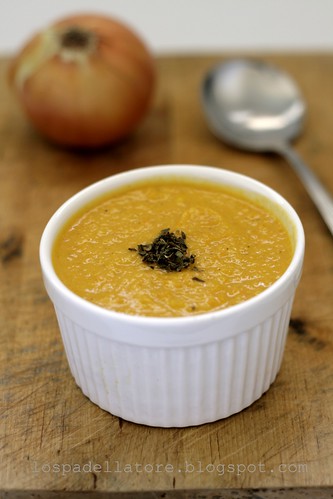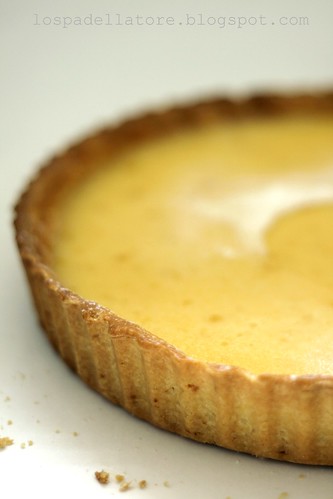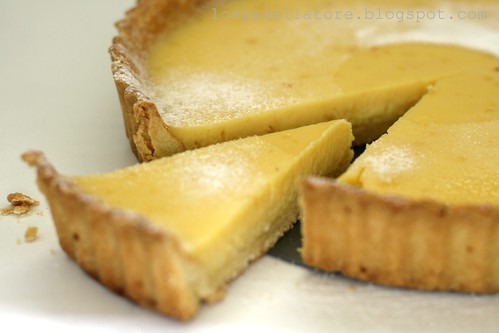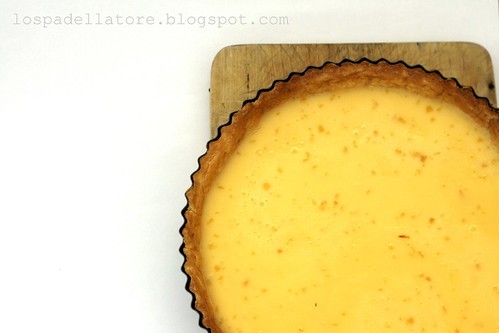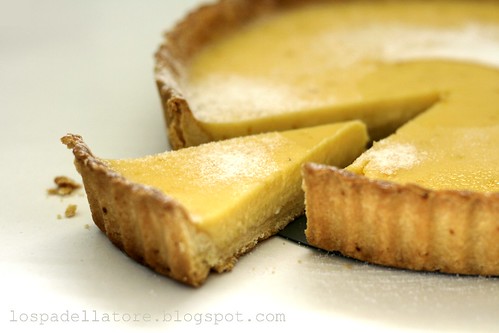La foto
La storiella
Adoro usare il mio mini chopper. Quando inizio a "blendare" frutta e verdura che diventano delizione salse cremose andrei avanti per ore... :)
Quando cucino le verdure di solito parto da una classica base di cipolle e carote sminuzzate (a volte anche aglio o sedano) che faccio sudare con un filo d'olio e un po' d'acqua. La "base del gusto", diciamo. Poi taglio in base a come mi gira la verdura "principale" e la microondo per un paio di minuti. Poi tutto insieme in pentola, sale, pepe, spezie e via!
Questa mattina dovevo prepararmi il pranzo per la settimana, così ho iniziato a cuocermi del riso ed il soffritto di base. Ok, usiamo quella bella zucca che ho comperato la settimana scorsa... Cucinato tutto come ho spiegato sopra. Mmm che profumino! Un bel po' di verdure con il riso e del tonno per il pranzo ed il resto... nel chopper! Semplicemente deliziosa. :)
La ricetta
Ingredienti Mise en place
- zucca gialla sbucciata a pezzi grossi: 500 g
- cipolla, tritata: 100 g
- carote, tritate: 100 g
- olio: 5 g
- panna: 100 g
- sale
- pepe
- cumino
Preparazione
- in una pentola, sudare cipolla e carote con olio e un po' d'acqua per 5-6 minuti
- cuocere la zucca al microonde fino a quando diventa morbida
- aggiungere la zucca al soffritto, regolare di sale pepe e cumino, fare insaporire per un paio di minuti
- blendare con la panna
- done.
Dati nutrizionali
| Calorie per 100 g | 70 kcal |
| Carboidrati | 29% |
| Proteine | 34% |
| Grassi | 36% |
L'angolo della cultura
Uso sempre verdure in stagione. Economiche e fresche.
ShareThe photo
The little history
I love to use my small mini chopper. When I start blending vegetables or fruits and create delicious creamy sauce I can continue for hours... :)
When I cook vegetables I usually start with a classic base of diced onions and carrots (sometimes I add garlic or celery) that I sweat with a little bit of oil and water in a pan. This is the "base" for the flavour. Then I cut the "main" vegetable and microvave it for a couple of minutes. It's a kind of blanching... At the end I stir all in the pan, salt, pepper, spices and that's it!
This morning, for example I have to prepare my lunch for the week, so I started cooking some rice and a base of onion and carrots. Ok, let's use that beautiful butternut pumpkink that I bought last week... So I followed the procedure I illustrate above. Mmm smells good! Half of the pumpking with the rice and some tuna for my lunch and the rest... in the chopper with some cream! Simply delicius. :)
The recipe is here
Ingredients Mise en place for a 24 cm round tart tin
- pumpkin, peeled cut in big pieces: 500 g
- onion, diced: 100 g
- carrot, diced: 100 g
- oil: 5 g
- cream: 100 g
- salt
- pepper
- cumin
Method
- in a pot, sweat onions and carrots with o il and a little bit of water for 5-6 minutes
- cook the pumpkin in the microwave until tender (10 minutes for me)
- add pumpkin in the pot, season with salt pepper and cumin, cook for a couple of minutes blend with cream
- done.
Nutritional facts
| Calories 100 g | 70 kcal |
| Carbohydrates | 29% |
| Proteins | 34% |
| Fat | 36% |
The culture corner
I always use vegetable in season. They are cheap and fresh.
Share
